when I need a fire either when camping or as part of a ritual or an event then a fire will be coaxed and I will draw on my knowledge and experience to ensure fire is welcomed through rubbing sticks and tended with awareness (not rushed and doesn’t matter how long it takes unless of course one is needed in an emergency ) . Outside (includes within large covered spaces/roundhouses etc) I will always rub sticks to welcome fire with sets I have prepared . Preparation is all part of my practice.
I’m not doing as many practical posts at the moment but passing on the knowledge and skills I pick up along the way is also important to me so I will still continue to share practical tips too - and lots on my website and a fire plough tutorial on YouTube. In the past I did mostly practical posts but now I want to share more about the sacred aspect of my approach as that is the underlying reason I rub sticks and underlying in my approach when I guide people to rub sticks.and it’s just as important for me to pass on my approach, philosophy and share folklore & stories 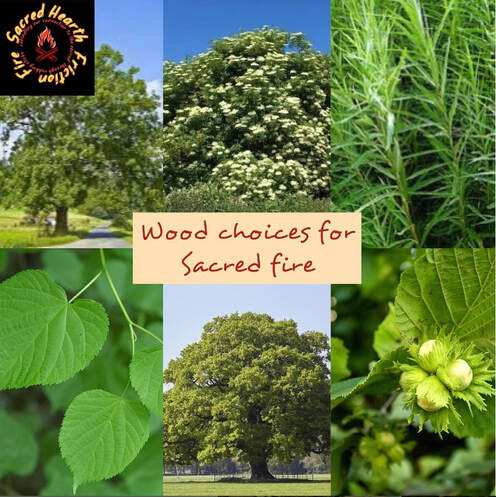 Wood choices for sacred fire… I don’t mandate any particular wood - what is important for me personally is:
1-it’s native to where I am 2- preferably it’s sourced local to where I am welcoming fire (if at all possible) 3-it’s been collected from fallen/dead standing wood or it’s overly abundant and has been harvested sustainably My preferred wood for bow drill in ritual is English Oak which has been collected from wind fallen branches. Hazel is my favourite tree and loves having fire coaxed from her and commonly sheds branches. For sacred/ritual practice I collect my wood in advance and season There are lots of combinations for bow drill and it can be a personal choice.I also make my own cordage usually from nettles With Neid Fire I am working on a larger scale and so I am reliant on what I can find which has naturally fallen - I have Hazel and Ash spindles and Hazel and Poplar hearth logs and Holly for the bearing log. I kept/keep scouring the woods to find suitable fallen branches/trees.And for Neid Fire you need to collect in advance and season Traditionally Oak was used for Neid fire but it is very difficult to find suitable fallen oak and I would NEVER cut a live Oak for my own purposes and I DO NOT advocate cutting live Oak. For the fire wood - for me it is importent that it is native, local (if poss) and collected from fallen wood and is a good burning wood and is dry - I commonly use hazel and/or birch first (fast burning) then ash or seasoned oak. Again I collect in advance and season. (These woods are all native and local to me) The sourcing, collecting and preparing the wood is a huge part of my friction fire practice which I endeavour to do with awareness and respect and gratitude -for neid fire it can take several months I’m blessed in that I live next to woods with Hazel, Oak, Elder, Ash, Hawthorn, Elm, Poplar, Willow, Tilia, Ivy, Clematis This is an interesting method :) A great work out for your legs :) Again just a bit of fun, but it works well once you get the co-ordination right ! This one was just for fun - using my arm as the bow ! I don't take credit for first trying this, qute a few people have tried it and @wur_thaz_smoke had previously cracked it. It's not as easy as it looks here and takes a bit of experimentation to get it right and to get the co-ordination :) A longer spindle helps - this came just below my knee; and it was quite thin so less pressure needed; multiple wraps of the cord were also needed and I found it easier if the end of cord in my hand came off the top of the wraps rather than the bottom. I can't think of any situation where I would need to use this technique - as there is usually a bow of some sort available! Over the last week, I've been reconnecting with the Hand Drill, and I've been pleasantly surprised at how easy it has been to get back into it since it has been a while, and in the past it has been a love hate relationship!
Having some good dry pieces of Clematis for the hearth and some nice straight Teasel spindles helps, as well as having a few years of (on-off ) experience of the hand drill. My preferred stance is to kneel using a longer piece of wood (which I kneel on) to hold down the hearth. It's also about "feeling" the spindle in the hearth, to feel if more of less pressure is needed, and to relax into it and not get frustrated, but to just keep practicing! It’s been a while, but I am still here and still passionate about fire. A few people have been in touch which has stirred the embers and brought a bit of life back into my inner fire!
I’ve posted a few things on my Facebook page recently. This is more a project, not a business so I do go through phases and have other things on too! Anyways! Adaptability is the key to success! Yes it is, and is one reason why us Homo Sapiens have done so well! With the lockdown, I noticed a couple of people commenting that they couldn’t source materials. I thought about this, and thought “well one just has to adapt” so I looked around the house and found 2 wooden coat hangers and an egg cup and made a bow drill set! It took a little experimentation but I managed to tease an ember 😀 Slow and steady worked best for me, and once done, you can hang them up for safe keeping ! And I discovered that egg cups make excellent bearing blocks! 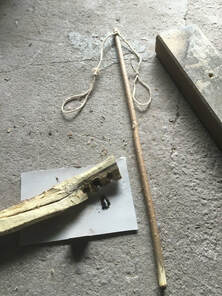 Today, after quite an absence I decided to pick up the Hand Drill again. Since it has been a while (a couple of months), my hands and muscles weren't very conditioned. I decided to use thumb loops. Thumb loops are basically an aid to the hand drill to prevent your hands from moving down the spindle. I use very simple thumb loops by tying a loop in each end of a piece of cordage (this is Jute) and tying the cordage around the top of the spindle. You do want each loop to hang at least 6 inches , otherwise I find it restricts movement of your hands. You place each thumb through a loop and then rotate the spindle between your hands, as per usual for hand drilling, applying downward pressure as you spin. The thumb loops keep your hands in the same position. It can take a bit of trial and error to get the knack of it and there have been times when I've found it easier without! It is a much under-used aid within the bushcraft community, I think a lot of people frown on it as cheating but for me it is just another aid, and you still need to learn and understand the principles of the hand drill to succeed with it. I do prefer to be able to Hand Drill without Thumb Loops but at times it can be a useful tool in the box, and can aid learning and aid in conditioning your hands\muscles (as you can usually go for longer as thumb loops are not as tiring as moving your hands up and down the spindle.) Oh this is good... I think this may be the oldest surviving evidence of friction fire. Apparently a 6000 year old wooden Fire Drill was discovered in Canada (Triquet Island , BC) in 2016. Click here for an article in The Vancouver Sun which is showing a photograph of the ancient spindle, but it is lacking information which is surprising as this is quite a find! For me , this is fascinating - the oldest fire drills I am aware of are from China (approx 2500 yo) and Egypt (approx 4000 yo).
There is this paper I have found by Alisha Gauvreau and Dr Duncan McLaren from the Anthropology Department, University of Victoria (B.C) working on the Hakai Ancient Landscapes Archaeology Project - which states that the "Fire Drill" was found in the peat layer which is between 6,726 and 6,674 years old but that's it! I'm surprised there isn't more information on it as it is an amazing find! I'm trying to find archaeological reports for the Triquet Fire Drill but I've not found any yet .... but I'm enquiring with the Hakai Institute - watch this space! It also raises more questions, such as:
The Ancient Triquet Village is one of the oldest settlements discovered in North America (approx 14000 years old) and I found this statement fascinating “It appears we had people sitting in one area making stone tools beside evidence of a fire pit, what we are calling a bean-shaped hearth” (Alisha Gauvreau) .. re-affirming the fire being central to human activity. The other amazing thing about this is that the team based their search on oral stories passed down through generations that this Island had been populated during the Ice Age which alot of people discounted. Link to the article: https://vancouversun.com/news/local-news/heiltsuk-first-nation-village-among-oldest-in-north-america-archeologists The hand drill , is the method I find the most profound , and more akin to a spiritual practice, as it is just you and your hands welcoming in the fire. It's also one I have had a love and hate relationship with, though I do seem to be starting to relax more with it. I decided to pick it up again last week after having a break for a few months and I happily discovered that I was able to welcome an ember using a slightly different technique. I used a longer spindle and knelt rather than sat, and used a piece of wood to weigh down the hearth board to stop it from moving and after only a little while I was blessed with an ember. And a few days later , I was successful again so this way does seem to be better for me - you can apply more downward pressure but it does need a longer spindle. The woods used were Elder spindle and Clematis hearthboard. I also leave the bark on the spindle (except for the bottom) as I find it helps with grip.
|
Archives
January 2024
Categories
All
|
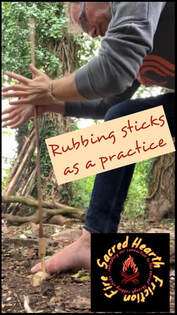
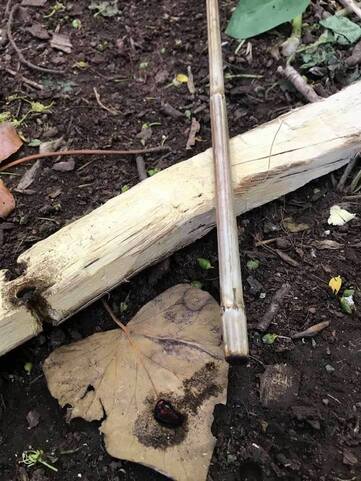



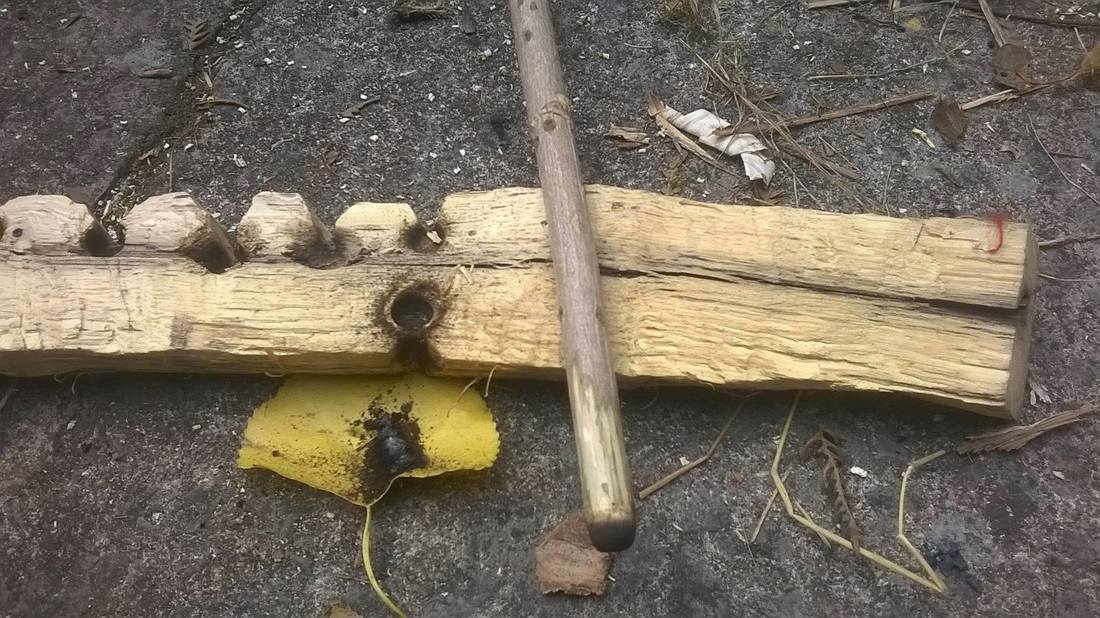
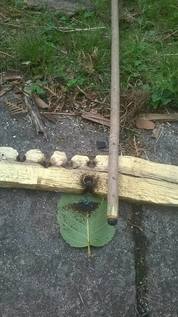
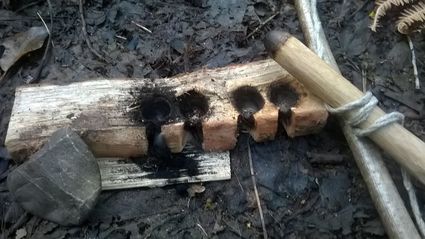
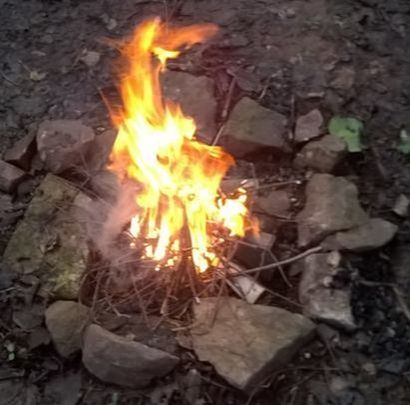
 RSS Feed
RSS Feed